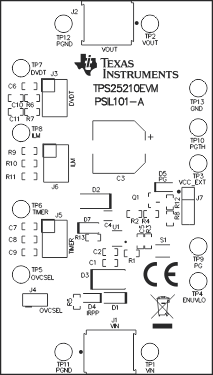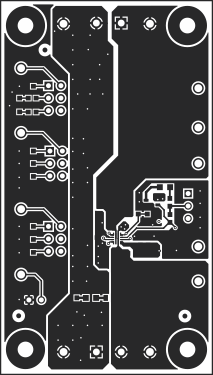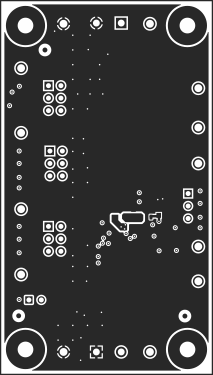SLVUC34 March 2021 TPS2521
6.1 PCB Drawings
Figure 6-1 shows component placement on the EVAL Board. Figure 6-2 shows PCB layout images.

 Figure 6-1 TPS25210EVM Board (a) Top Assembly (b) Bottom Assembly
Figure 6-1 TPS25210EVM Board (a) Top Assembly (b) Bottom Assembly
 Figure 6-2 TPS25210EVM Board (a) Top Layer (b) Bottom Layer
Figure 6-2 TPS25210EVM Board (a) Top Layer (b) Bottom Layer